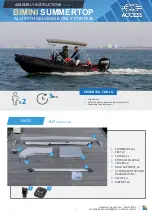
Introduction
Warnings and Instructions
7
Follow the Regulations
Applicable information is available in National Fire Protection Association (NFPA) 30A;
Code for Motor Field
Dispensing Facilities and Repair Garages
, NFPA 70;
National Electrical Code
(NEC), Occupational Safety and
Hazard Association (OSHA) regulations and federal, state, and local codes. All these regulations must be
followed. Failure to install, inspect, maintain or service this equipment in accordance with these codes, regulations
and standards may lead to legal citations with penalties or affect the safe use and operation of the equipment.
Prevent Explosions and Fires
Fuels and their vapors will explode or burn, if ignited. Spilled or leaking fuels cause vapors. Even filling customer
tanks will cause potentially dangerous vapors in the vicinity of the dispenser or island.
Working Alone
It is highly recommended that someone who is capable of rendering first aid be present during servicing.
Familiarize yourself with Cardiopulmonary Resuscitation (CPR) methods, if you work with or around high voltages.
This information is available from the American Red Cross. Always advise the station personnel about where you
will be working and caution them not to activate power while you are working on the equipment. Use the OSHA
Lockout/Tagout procedures. If you are not familiar with this requirement, refer to OSHA documentation.
Working with Electricity Safely
Ensure that you use safe and established practices in working with electrical devices. Poorly wired devices may
cause a fire, explosion or electrical shock. Ensure that grounding connections are properly made. Ensure that you
do not pinch wires when replacing covers. Follow OSHA Lockout/Tagout requirements. Station employees and
service contractors need to understand and comply with this program completely to ensure safety while the
equipment is down. Before you start work, know the location of the Emergency Power Cutoff Switch (the E-
STOP). This switch cuts off power to all fueling equipment and submerged turbine pumps and is to be used in the
event of an emergency. The buttons on the console at the cashier’s station WILL NOT shut off electrical power to
the pump/dispenser. This means that even if you press a button on the console labeled EMERGENCY STOP,
ALL STOP, PUMP STOP, or something similar, fuel may continue to flow uncontrolled.
Hazardous Materials
Some materials may present a health hazard if not handled correctly. Ensure that you clean hands after handling
equipment. Do not place any equipment in the mouth.
FAILURE TO COMPLY WITH THE FOLLOWING WARNINGS AND SAFETY PRECAU
-
TIONS COULD RESULT IN PROPERTY DAMAGE, INJURY OR DEATH.
FIRE HAZARD!
Do
NOT
use
power tools
(Class I Division I and Class I Division II) during the installation or
maintenance of equipment. Sparking could ignite fuel or vapors, resulting in fire.
CHEMICAL EXPOSURE HAZARD!
Wear
appropriate
safety equipment
during installation or maintenance of
equipment. Avoid exposure to fuel and vapors. Prolonged exposure to fuel may cause severe skin irritations and
possible burns.
REQUIREMENTS FOR USE
• The Red Jacket is designed for use only at facilities dispensing motor fuels.
• Application of The Red Jacket must be consistent with NFPA Code 30A, OSHA regulations, and federal, state
and local fire codes, and other applicable local regulations.
• The selection of any Veeder-Root product must be based upon physical specifications and limitations and the
product’s compatibility with the materials to be handled. Veeder-Root makes no warranty of fitness for a
particular purpose.
• All Veeder-Root products should be used in accordance with applicable federal, state and local laws,
ordinances and regulations.
Содержание HydrX
Страница 1: ...Manual No 577014 446 Revision E HydrX FuelConditioning System Installation Manual...
Страница 39: ......












































